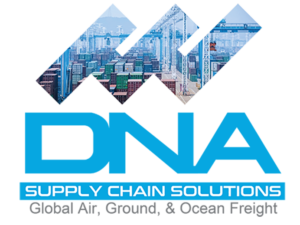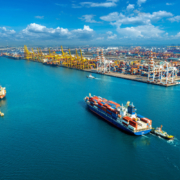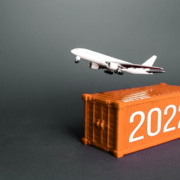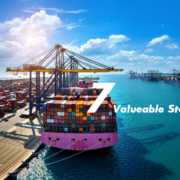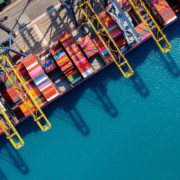Transportation and Logistics Industry Trends 2022. If retailers and logistics organizations want to remain competitive in 2022, they must stay current on the latest news and developments in the logistics and supply chain industries.
The disruption caused by COVID-19 to the equilibrium between the supply and demand of products had a significant effect. This effect reaches all across the world on supply networks.
As a result of the epidemic and the subsequent lockdown in 2020, output slowed down worldwide. At the same time, the government of the United States of America started making efforts to stimulate the economy. The also making efforts to stimulate individuals and businesses received more money to spend.
Because of this, the United States was forced to use up stockpiles worth trillions of dollars while manufacturing was halted domestically and internationally. As the demand and supply gap increased, businesses attempted to stay competitive by liquidating their existing inventory.
Thus, air freight companies should reduce their logistics expenses if they want to make their supply chain operations more efficient. They keep their customers satisfied with on-time delivery, reevaluate their operations, and adapt to new supply chain and logistics trends.
Transportation and Logistics Industry Trends 2022 | Trend no 1: concentrating on retaining drivers as customers
Companies must follow the supply chain trend in addressing the driver shortage and investing in keeping drivers. This is the only way if they want to stay ahead of the curve. Also to ensure that their supply chain continues to function correctly.
This includes providing drivers with incentives to remain employed by their companies (including but not limited to pay and safety matters).
Providing a driver app to air Cargo Company to increase productivity and eliminate bottlenecks in the supply chain’s final mile is another trend that has emerged recently. Drivers might be compensated on a per-drop or per-delivery basis in the last mile as an alternative to an hourly wage or a salary.
This type of business model, when combined with tools that simplify the drivers’ jobs, gives them an incentive. An incentive to increase the number of deliveries they do daily and can make it simpler to retain drivers.
Trend no 2: Bringing the materials to a more convenient location
Due to the high level of competition in the industry among air cargo company USA, on-demand delivery is rapidly becoming a way to differentiate oneself from the crowd.
There was a time when same-day delivery was unheard of and unimaginable. As of today, it is no longer simply an “add-on”; instead, a significant number of clients now anticipate receiving it.
However, most supply systems struggle even to deliver the following day! Because of this, the practice of localizing the supply chain in the market for rapid commerce has been highly prevalent.
One of the most significant aims for the year 2022 is to establish more locations to store the inventory. Also, to make sure that a system is in place through which orders can send to those locations to fulfill.
Trend no 3: Making supply chains more adaptable with intelligent technologies in the supply chain
There is a trend afoot to integrate all of the technologies involved in the supply chain, from e-commerce to the experience one has after making a purchase and from the first to the last mile.
There is rapid development in the technology for managing supply chains. To keep up with the competition, processes will need to be automated, and data will have to be integrated.
It is essential for an air freight company near me supply chain operations that whatever SCM technology they choose also be compatible with their other supply chain systems. This will include their transportation management system (TMS), warehouse management system (WMS), inventory management system (IMS), and customer relationship management system (CRM).
Robust data synchronization that works in both directions ensures that every business platform and supply chain, as well as every member of the team, is always in sync with one another.
Transportation and Logistics Industry Trends 2022| Conclusion
The key objective for supply chains in the not-too-distant future is to make them more resilient if anything unexpected occurs.
Even though the pandemic, Brexit, and other events have caused problems for both global and local supply chains. The trends show that many organizations have switched to a digital supply chain. They choose digital to keep their supply chain operations running smoothly.
This is because digital supply chains are more resilient to disruptions than traditional ones.
The market is undergoing shifts. These shifts will most likely continue till 2022. To maintain their place in the market, brands must ensure that they are current with the latest global supply chain trends developments. The popularity of online shopping continues to rise, as does the number of deliveries.
Read More:
Ocean Freight Market Outlook 2022-2024
COVID Supply Chain Disruption Examples: A Detailed Overview
Global Supply Chain Nightmare Near Make-or-Break Point for Easing in 2022
What is Shipping Company all about & how they operate in Market for a Successful Shipping Process?
Examples of Intermodal Transportation, How they work and their Impacts
